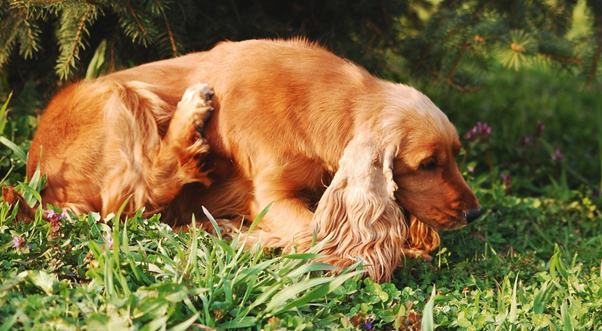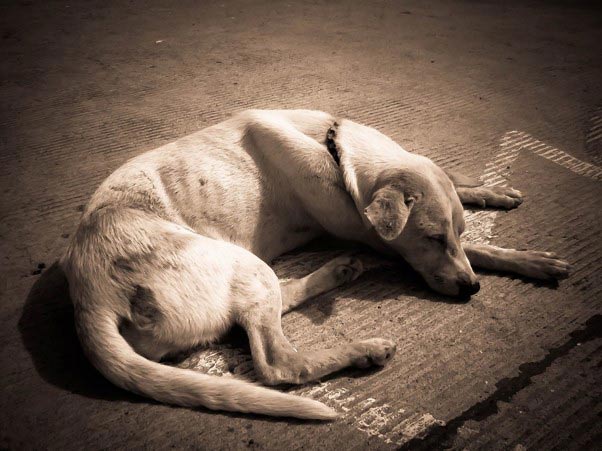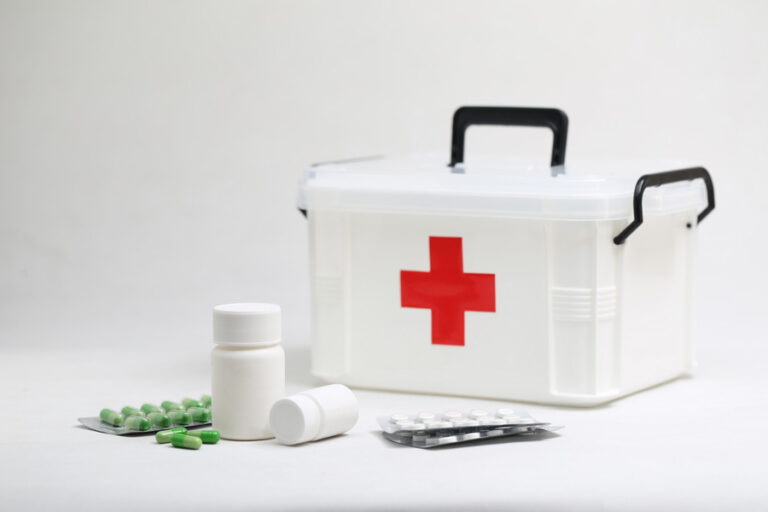How to Handle Dog Aggression: A Guide for Dog Pet Owners
- Last updated on April 28, 2023
- By: Caroline Stowe
Dogs can be wonderful companions and loyal friends, but when they become aggressive it can be an intimidating and potentially dangerous situation.
Understanding the causes of dog aggression, how to respond to different types of aggression, and training your dog to prevent or correct unwanted behavior are all important steps for anyone who is dealing with a canine companion that exhibits aggressive behaviors.
In this blog post, we will explore these topics in detail so you have the knowledge necessary to handle any type of aggressive behavior from your pup.
Understanding Dog Aggression
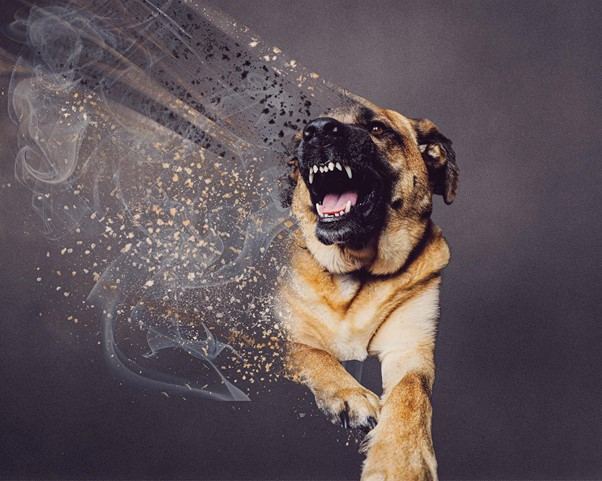
Dog aggression is a behavior exhibited by dogs that are characterized by growling, snarling, snapping, lunging, or biting.
This type of behavior can be directed toward people or other animals and can range from mild annoyance to extreme aggression.
When it comes to understanding dog aggression, it is important to understand that there are several types of aggressive behavior in dogs and that the root cause of each type of aggression can vary greatly.
Dogs may display signs of aggression for various reasons such as fear, pain, or insecurity, but some may also be aggressive due to dominance issues, territoriality, or protection.
Signs Of Aggression in Dogs
Before you begin working on managing your dog’s aggression, it’s important to be able to recognize it first.
This will help you properly address the behavior before it escalates into something worse or dangerous. Here are some common signs of aggression in dogs:
- Growling or barking at people or other dogs
- Snapping or biting when petted or handled
- Lunging towards people or other animals
- Raising hackles (the fur along their spine stands up)
- Showing teeth when approached too closely
Once you have recognized these signs of aggression and identified them as such, you should take further steps in addressing the issue with your pup.
In order to effectively handle dog aggression, it is important to first identify the cause and then take steps to address it using the proper techniques.
Identifying the Causes of Dog Aggression
Determining the cause of a dog’s aggressive behavior can be difficult without professional help.
One of the first steps to take is to observe your dog’s behavior and the environment in which it occurs, as this can help you identify potential triggers that may be causing their aggression.
Additionally, it is important to rule out any underlying medical issues that may be contributing to aggressive behavior.
Check out the video below to learn more about the causes of dog aggression.
How to Respond to Different Types of Dog Aggression
Types of Dog Aggression
Following are some of the different types of dog aggression.
- Fear aggression
- Possessive aggression
- Territorial aggression
- Protective aggression
- Social/Dominance aggression
- Frustration/Redirected aggression
- Pain or Injury induced aggression
Responding to Different Types of Dog Aggression
Depending on the type of aggression your dog is displaying, there are different strategies that should be used to address it.
If your dog is displaying fear-based aggression, it is important to remain calm and reassuring while avoiding physical contact or reprimands which may further scare them.
When responding to possessive aggression, it’s important to first remove the item or location that your dog is aggressive over. You should also avoid reprimands during this time, as confronting your pup may result in more aggressive behavior.
Instead, employ positive reinforcement training methods such as providing treats when they remain calm and relaxed in positions away from the object or area of conflict.
Additionally, redirecting their focus to another activity can be helpful for calming them down and teaching them how to behave more appropriately in these situations.
Lastly, if needed you can consult a professional trainer for additional help managing these issues.
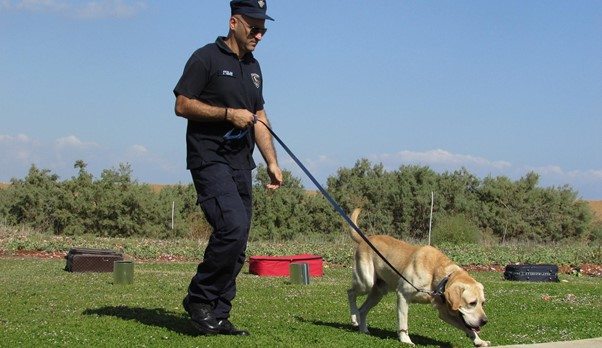
For territorial/protective aggression, try using distractions such as toys or calming treats to redirect their attention and slowly increase the distance between them and the perceived threat.
Training Your Dog to Prevent and Correct Unwanted Behavior
In addition to responding in an appropriate manner, it is important to train your dog to prevent and correct aggressive behavior in order to minimize its occurrence.
Positive reinforcement is the best way to train your dog, as rewarding them for good behavior can help to reinforce it.
Additionally, teaching basic commands such as “sit” and “stay” can also be helpful in managing aggression by helping to redirect their attention when they become aroused or aggressive.
Tips for Dealing With an Aggressive Dog in Public Situations
Enforcing Boundaries & Rules
Once you know what’s causing your pup’s aggressive behavior, it’s time to start enforcing boundaries and rules.
Make sure that everyone in the house sticks to these rules—they should be clearly defined and easy to follow. This will help set up a consistent routine that your pup can rely on and feel more secure within.
Additionally, make sure everyone in the house is giving your pup ample attention and love—this will help create an environment where they feel safe and secure enough to avoid any further issues with aggression.
Training & Socialization
If basic boundaries aren’t helping with your pup’s aggression, then it may be time for some professional training.
This will give you access to experienced trainers who can work directly with your dog on reinforcing good behaviors and eliminating bad ones.

Professional trainers also often recommend taking part in socialization classes so that pups can learn how to interact better with other dogs—and people!—in different environments.
Socialization classes are great for teaching pups appropriate behavior when confronted by unfamiliar situations or stimuli—which is great for making sure they don’t lash out in fear or confusion.
Dealing With an Aggressive Dog
When dealing with an aggressive dog in public, it is important to remain calm and not escalate the situation.
Keep your dog on a leash at all times if possible, maintain a safe distance from others, and be prepared to leave the area if necessary.
Additionally, attempt to distract them using treats or toys as a way to redirect their attention from the perceived threat.
When is Professional Help Needed ?
If you are unable to effectively manage your dog’s aggressive behavior, it is important to seek professional help immediately.
A qualified trainer or veterinarian can provide the necessary guidance and advice on how to safely handle and train a dog with aggression.
Professional help can also be beneficial to identify any underlying medical issues or behavior problems that may be contributing to your dog’s aggressive behavior.
Conclusion
It’s natural for all animals—including our canine companions—to display occasional aggressive behaviors.
However, if left unchecked, these behaviors can become problematic over time and lead to serious issues down the line.
The best way of addressing this type of behavior is through positive reinforcement training that rewards desirable behavior instead of punishing undesired ones.
With patience and consistency, you can help your pup become better socialized so that any potential triggers don’t cause them to act out aggressively anymore!
With this guide on how to handle dog aggression, we hope that pet owners now have a better understanding of how they can manage their furry companion’s unwanted behaviors!
-
Author: Caroline Stowe
- Updated on April 28, 2023
Disclaimer: This article doesn’t intend to replace professional veterinary advice, nor should it be used as a substitute for veterinary services, diagnosis, or treatment. The content on this website, including information and opinions expressed herein, are intended for general informational purposes only. In case you have concerns or questions regarding your dog’s health and diet requirements, please consult your veterinarian before doing anything that might affect it.
DogPetGuide.com and the writer are not responsible or liable for any damage, liability, costs, or claims arising from any possible consequences of the reader’s action after reading this article.


